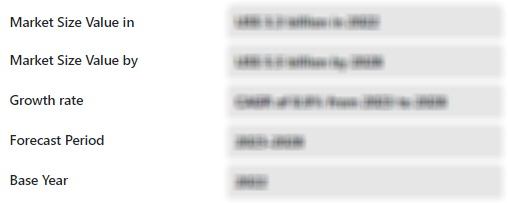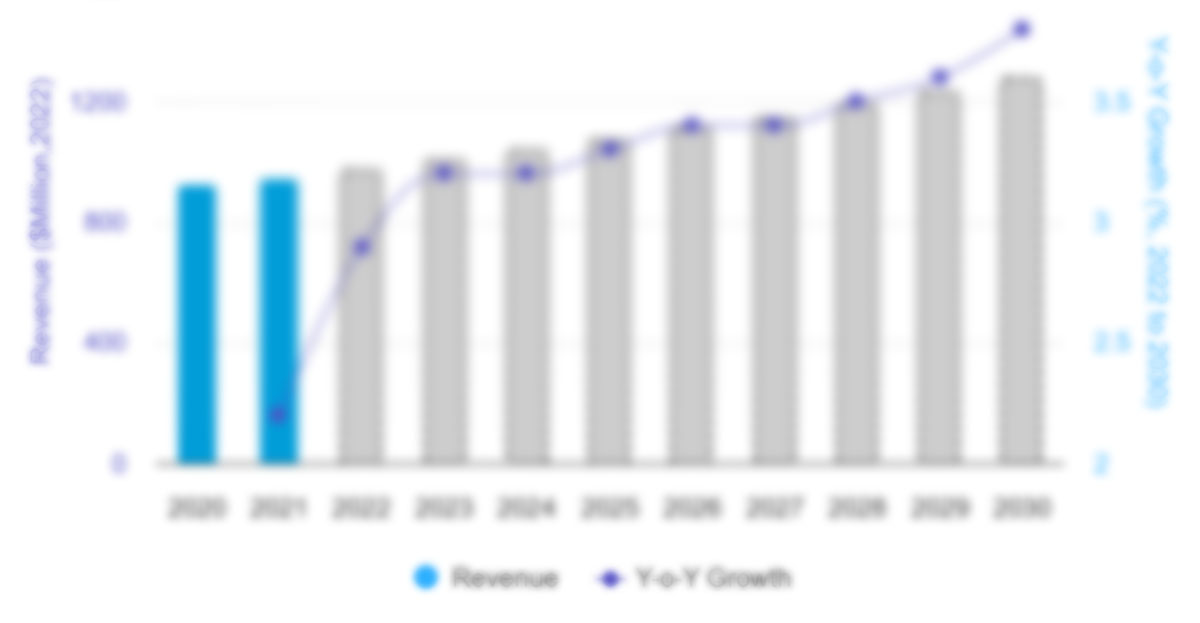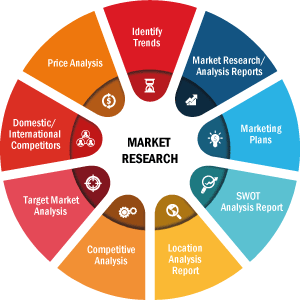The Predictive and Presymptomatic Testing Market is expected to register a CAGR of 9.40% from 2025 to 2031, with a market size expanding from US$ XX million in 2024 to US$ XX Million by 2031.
The report presents an analysis based on type (internal fixators, external fixators, other trauma products). The report is segmented bysurgical site (lower extremities, upper extremities). The report further provides analysis based on end user (hospitals and trauma centers, ambulatory surgery centers). The global analysis is further broken-down at regional level and major countries. The market size and forecast at global, regional, and country levels for all the key market segments are covered under the scope. The report offers the value in USD for the above analysis and segments. The report provides key statistics on the market status of the key market players and offers market trends and opportunities.
Purpose of the ReportThe report Predictive and Presymptomatic Testing Market by The Insight Partners aims to describe the present landscape and future growth, top driving factors, challenges, and opportunities. This will provide insights to various business stakeholders, such as:
- Technology Providers/Manufacturers: To understand the evolving market dynamics and know the potential growth opportunities, enabling them to make informed strategic decisions.
- Investors: To conduct a comprehensive trend analysis regarding the market growth rate, market financial projections, and opportunities that exist across the value chain.
- Regulatory bodies: To regulate policies and police activities in the market with the aim of minimizing abuse, preserving investor trust and confidence, and upholding the integrity and stability of the market.
Predictive and Presymptomatic Testing Market Segmentation
Condition- Breast and Ovarian Cancer
- Colorectal Cancer
- Alzheimer's Disease
- Multiple Endocrine Neoplasia Type - 2
- Haemochromatosis
- Cancer Testing
- Genetic Testing
Strategic Insights
Predictive and Presymptomatic Testing Market Growth Drivers- Advancements in Genomics and Biotechnology: Rapid advancements in genomics, including next-generation sequencing (NGS), have propelled the development of presymptomatic predictive tests. These tests can identify individuals at risk for genetic conditions before symptoms appear, fostering early intervention and personalized treatment, which drives the market for predictive presymptomatic testing solutions.
- Increasing Awareness of Preventive Healthcare: As preventive healthcare gains popularity, individuals are becoming more proactive about early disease detection. Predictive presymptomatic testing offers a proactive approach to prevent or manage diseases such as cancer, heart disease, and neurodegenerative conditions, fueling its demand among consumers and healthcare providers alike.
- Government Initiatives and Support: Governments are increasingly recognizing the importance of early detection and prevention in healthcare. Initiatives to fund genomic research and integrate predictive testing into public health strategies are encouraging the growth of the predictive presymptomatic testing market, particularly in cancer and rare genetic diseases.
- Integration of Artificial Intelligence in Testing: AI and machine learning algorithms are being integrated into predictive testing platforms, enhancing accuracy and efficiency in identifying at-risk individuals. These technologies can process vast amounts of genomic and clinical data to provide more accurate predictions of future health risks, driving market growth.
- Personalized Medicine Approach: With an increasing focus on precision medicine, presymptomatic tests are becoming more personalized. Tests are being tailored to individual genetic profiles, enabling healthcare providers to recommend targeted prevention strategies and therapies, further driving the market for presymptomatic testing and personalized healthcare solutions.
- Focus on Non-Invasive Testing Methods: There is a growing trend toward non-invasive predictive presymptomatic testing, such as blood tests, saliva tests, and urine-based diagnostics. These methods reduce discomfort and risk for patients while providing highly accurate risk assessments, making presymptomatic testing more appealing to a broader population.
- Expansion in Rare Disease Screening: Presymptomatic testing holds significant potential for rare disease screening, where early diagnosis is crucial for managing and treating conditions before symptoms appear. Companies can focus on developing tests for genetic disorders, offering an opportunity to enter underserved niches within the broader market.
- Collaborations with Healthcare Providers: Establishing partnerships with hospitals, clinics, and healthcare providers can help drive adoption of predictive presymptomatic testing. By offering integrated solutions within healthcare systems, manufacturers can ensure these tests reach a larger patient base, improving early detection and enabling personalized treatment options.
- Incorporating Wearable Technology: Wearable devices that monitor biomarkers and other health metrics can be integrated with predictive presymptomatic testing solutions. This collaboration offers a unique opportunity to continuously assess health data, enhancing the accuracy of risk predictions and creating a more comprehensive, real-time approach to disease prevention.
Market Report Scope
Key Selling Points
- Comprehensive Coverage: The report comprehensively covers the analysis of products, services, types, and end users of the Predictive and Presymptomatic Testing Market, providing a holistic landscape.
- Expert Analysis: The report is compiled based on the in-depth understanding of industry experts and analysts.
- Up-to-date Information: The report assures business relevance due to its coverage of recent information and data trends.
- Customization Options: This report can be customized to cater to specific client requirements and suit the business strategies aptly.
The research report on the Predictive and Presymptomatic Testing Market can, therefore, help spearhead the trail of decoding and understanding the industry scenario and growth prospects. Although there can be a few valid concerns, the overall benefits of this report tend to outweigh the disadvantages.
REGIONAL FRAMEWORK
Have a question?

Mrinal
Mrinal will walk you through a 15-minute call to present the report’s content and answer all queries if you have any.
 Speak to Analyst
Speak to Analyst
- Sample PDF showcases the content structure and the nature of the information with qualitative and quantitative analysis.
- Request discounts available for Start-Ups & Universities
- Sample PDF showcases the content structure and the nature of the information with qualitative and quantitative analysis.
- Request discounts available for Start-Ups & Universities

Report Coverage
Revenue forecast, Company Analysis, Industry landscape, Growth factors, and Trends

Segment Covered
This text is related
to segments covered.

Regional Scope
North America, Europe, Asia Pacific, Middle East & Africa, South & Central America

Country Scope
This text is related
to country scope.
Frequently Asked Questions
The Predictive and Presymptomatic Testing market is estimated to grow with a CAGR of 9.40% from 2023 to 2031.
Asia Pacific region is likely to witness the fastest growth rate during the forecast period.
The Predictive and Presymptomatic Testing market drivers include the increased awareness of trauma care, aging population, and rising healthcare expenditures.
Integration of telemedicine are likely to remain the key trend during the forecast period.
23andMe, Inc., BioAxis DNA Research Centre Private Limited, Abbott Molecular, Inc., Color Genomics, Inc., Gene by Gene Ltd., Direct Laboratory Services LLC (DirectLabs), Genomic Diagnostics, Myriad Genetics, Inc., Mapmygenome, Pathway Genomics Corporation, Quest Diagnostics, Inc., and Positive Bioscience, Inc. are prominent players in the Predictive and Presymptomatic Testing market.
North America dominated the Predictive and Presymptomatic Testing market in 2024
Yes! We provide a free sample of the report, which includes Report Scope (Table of Contents), report structure, and selected insights to help you assess the value of the full report. Please click on the "Download Sample" button or contact us to receive your copy.
Absolutely - analyst assistance is part of the package. You can connect with our analyst post-purchase to clarify report insights, methodology or discuss how the findings apply to your business needs.
Once your order is successfully placed, you will receive a confirmation email along with your invoice.
• For published reports: You'll receive access to the report within 4-6 working hours via a secured email sent to your email.
• For upcoming reports: Your order will be recorded as a pre-booking. Our team will share the estimated release date and keep you informed of any updates. As soon as the report is published, it will be delivered to your registered email.
We offer customization options to align the report with your specific objectives. Whether you need deeper insights into a particular region, industry segment, competitor analysis, or data cut, our research team can tailor the report accordingly. Please share your requirements with us, and we'll be happy to provide a customized proposal or scope.
The report is available in either PDF format or as an Excel dataset, depending on the license you choose.
The PDF version provides the full analysis and visuals in a ready-to-read format. The Excel dataset includes all underlying data tables for easy manipulation and further analysis.
Please review the license options at checkout or contact us to confirm which formats are included with your purchase.
Our payment process is fully secure and PCI-DSS compliant.
We use trusted and encrypted payment gateways to ensure that all transactions are protected with industry-standard SSL encryption. Your payment details are never stored on our servers and are handled securely by certified third-party processors.
You can make your purchase with confidence, knowing your personal and financial information is safe with us.
Yes, we do offer special pricing for bulk purchases.
If you're interested in purchasing multiple reports, we're happy to provide a customized bundle offer or volume-based discount tailored to your needs. Please contact our sales team with the list of reports you're considering, and we'll share a personalized quote.
Yes, absolutely.
Our team is available to help you make an informed decision. Whether you have questions about the report's scope, methodology, customization options, or which license suits you best, we're here to assist. Please reach out to us at sales@theinsightpartners.com, and one of our representatives will get in touch promptly.
Yes, a billing invoice will be automatically generated and sent to your registered email upon successful completion of your purchase.
If you need the invoice in a specific format or require additional details (such as company name, GST, or VAT information), feel free to contact us, and we'll be happy to assist.
Yes, certainly.
If you encounter any difficulties accessing or receiving your report, our support team is ready to assist you. Simply reach out to us via email or live chat with your order information, and we'll ensure the issue is resolved quickly so you can access your report without interruption.
The Insight Partners performs research in 4 major stages: Data Collection & Secondary Research, Primary Research, Data Analysis and Data Triangulation & Final Review.
- Data Collection and Secondary Research:
As a market research and consulting firm operating from a decade, we have published many reports and advised several clients across the globe. First step for any study will start with an assessment of currently available data and insights from existing reports. Further, historical and current market information is collected from Investor Presentations, Annual Reports, SEC Filings, etc., and other information related to company’s performance and market positioning are gathered from Paid Databases (Factiva, Hoovers, and Reuters) and various other publications available in public domain.
Several associations trade associates, technical forums, institutes, societies and organizations are accessed to gain technical as well as market related insights through their publications such as research papers, blogs and press releases related to the studies are referred to get cues about the market. Further, white papers, journals, magazines, and other news articles published in the last 3 years are scrutinized and analyzed to understand the current market trends.
- Primary Research:
The primarily interview analysis comprise of data obtained from industry participants interview and answers to survey questions gathered by in-house primary team.
For primary research, interviews are conducted with industry experts/CEOs/Marketing Managers/Sales Managers/VPs/Subject Matter Experts from both demand and supply side to get a 360-degree view of the market. The primary team conducts several interviews based on the complexity of the markets to understand the various market trends and dynamics which makes research more credible and precise.
A typical research interview fulfils the following functions:
- Provides first-hand information on the market size, market trends, growth trends, competitive landscape, and outlook
- Validates and strengthens in-house secondary research findings
- Develops the analysis team’s expertise and market understanding
Primary research involves email interactions and telephone interviews for each market, category, segment, and sub-segment across geographies. The participants who typically take part in such a process include, but are not limited to:
- Industry participants: VPs, business development managers, market intelligence managers and national sales managers
- Outside experts: Valuation experts, research analysts and key opinion leaders specializing in the electronics and semiconductor industry.
Below is the breakup of our primary respondents by company, designation, and region:

Once we receive the confirmation from primary research sources or primary respondents, we finalize the base year market estimation and forecast the data as per the macroeconomic and microeconomic factors assessed during data collection.
- Data Analysis:
Once data is validated through both secondary as well as primary respondents, we finalize the market estimations by hypothesis formulation and factor analysis at regional and country level.
- 3.1 Macro-Economic Factor Analysis:
We analyse macroeconomic indicators such the gross domestic product (GDP), increase in the demand for goods and services across industries, technological advancement, regional economic growth, governmental policies, the influence of COVID-19, PEST analysis, and other aspects. This analysis aids in setting benchmarks for various nations/regions and approximating market splits. Additionally, the general trend of the aforementioned components aid in determining the market's development possibilities.
- 3.2 Country Level Data:
Various factors that are especially aligned to the country are taken into account to determine the market size for a certain area and country, including the presence of vendors, such as headquarters and offices, the country's GDP, demand patterns, and industry growth. To comprehend the market dynamics for the nation, a number of growth variables, inhibitors, application areas, and current market trends are researched. The aforementioned elements aid in determining the country's overall market's growth potential.
- 3.3 Company Profile:
The “Table of Contents” is formulated by listing and analyzing more than 25 - 30 companies operating in the market ecosystem across geographies. However, we profile only 10 companies as a standard practice in our syndicate reports. These 10 companies comprise leading, emerging, and regional players. Nonetheless, our analysis is not restricted to the 10 listed companies, we also analyze other companies present in the market to develop a holistic view and understand the prevailing trends. The “Company Profiles” section in the report covers key facts, business description, products & services, financial information, SWOT analysis, and key developments. The financial information presented is extracted from the annual reports and official documents of the publicly listed companies. Upon collecting the information for the sections of respective companies, we verify them via various primary sources and then compile the data in respective company profiles. The company level information helps us in deriving the base number as well as in forecasting the market size.
- 3.4 Developing Base Number:
Aggregation of sales statistics (2020-2022) and macro-economic factor, and other secondary and primary research insights are utilized to arrive at base number and related market shares for 2022. The data gaps are identified in this step and relevant market data is analyzed, collected from paid primary interviews or databases. On finalizing the base year market size, forecasts are developed on the basis of macro-economic, industry and market growth factors and company level analysis.
- Data Triangulation and Final Review:
The market findings and base year market size calculations are validated from supply as well as demand side. Demand side validations are based on macro-economic factor analysis and benchmarks for respective regions and countries. In case of supply side validations, revenues of major companies are estimated (in case not available) based on industry benchmark, approximate number of employees, product portfolio, and primary interviews revenues are gathered. Further revenue from target product/service segment is assessed to avoid overshooting of market statistics. In case of heavy deviations between supply and demand side values, all thes steps are repeated to achieve synchronization.
We follow an iterative model, wherein we share our research findings with Subject Matter Experts (SME’s) and Key Opinion Leaders (KOLs) until consensus view of the market is not formulated – this model negates any drastic deviation in the opinions of experts. Only validated and universally acceptable research findings are quoted in our reports.
We have important check points that we use to validate our research findings – which we call – data triangulation, where we validate the information, we generate from secondary sources with primary interviews and then we re-validate with our internal data bases and Subject matter experts. This comprehensive model enables us to deliver high quality, reliable data in shortest possible time.





 Get Free Sample For
Get Free Sample For